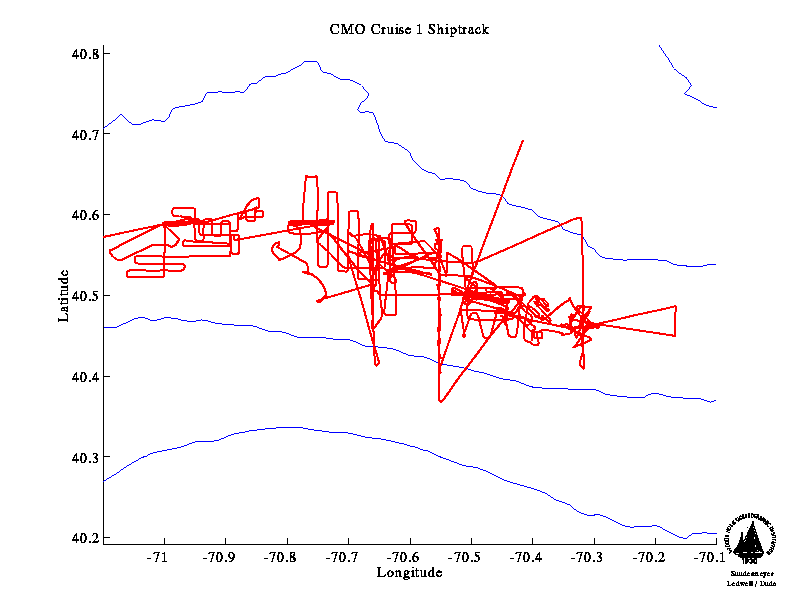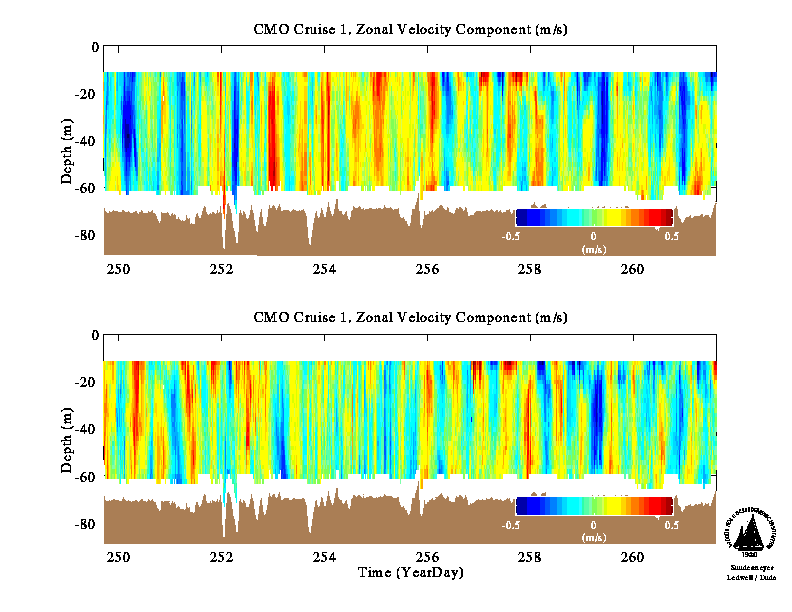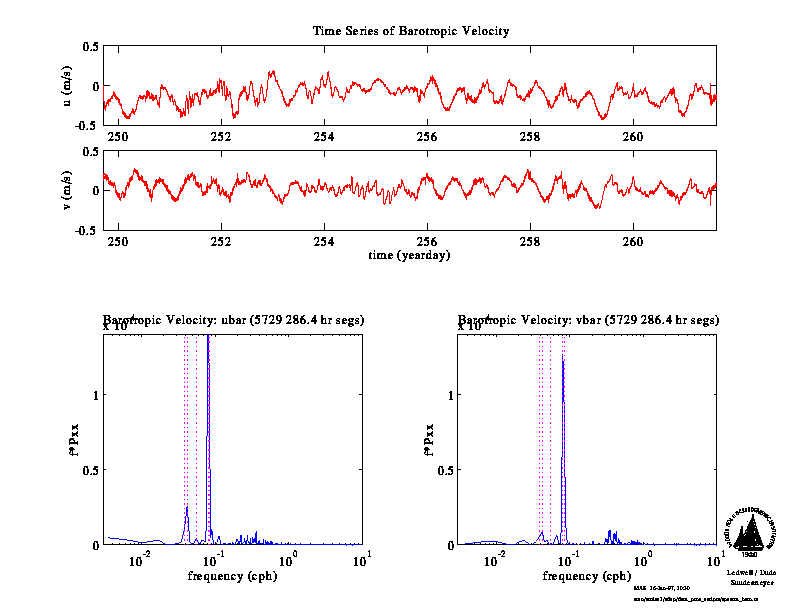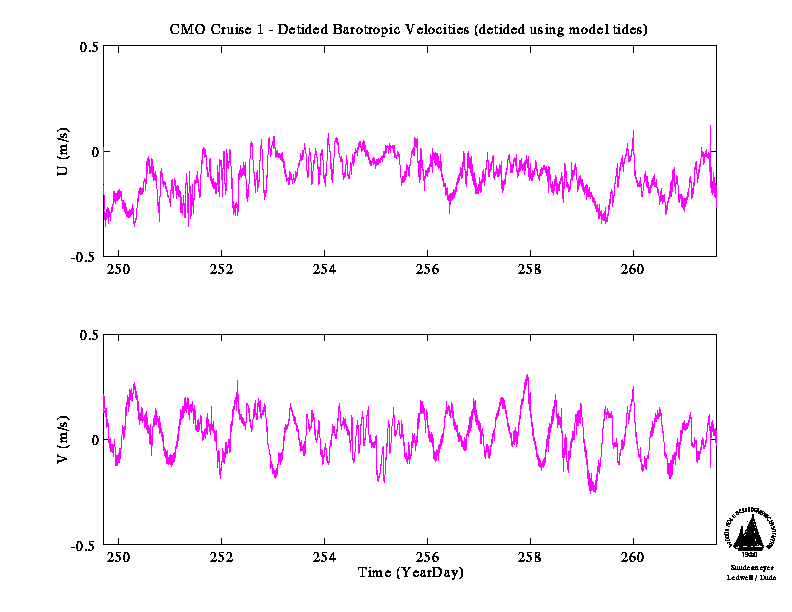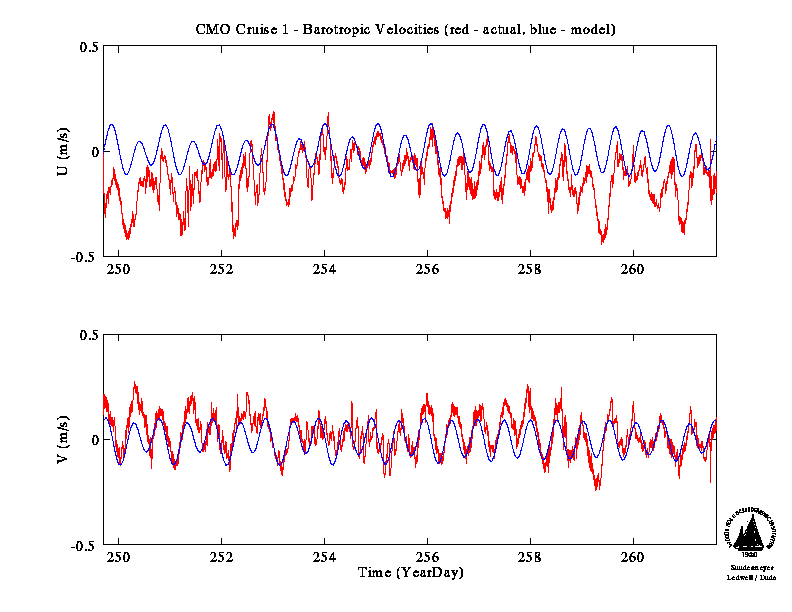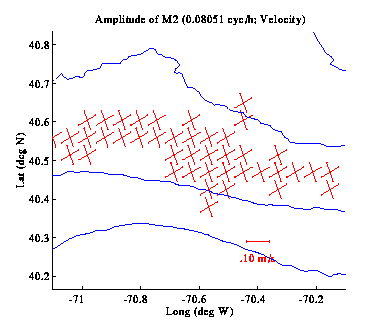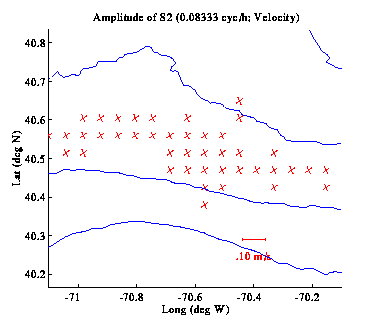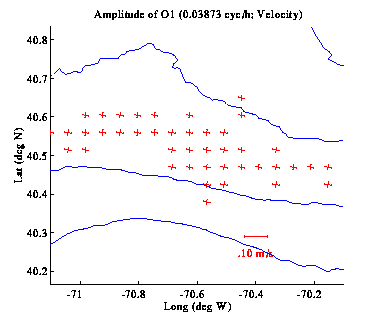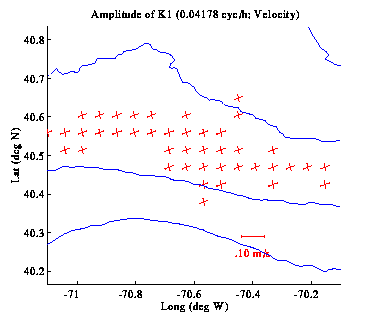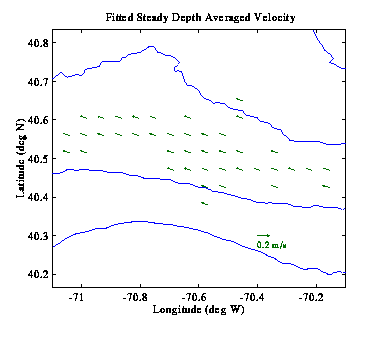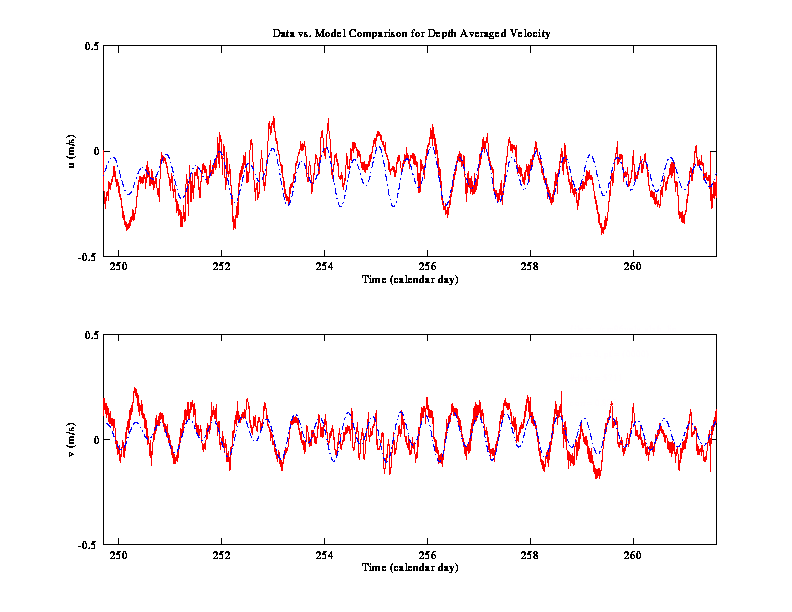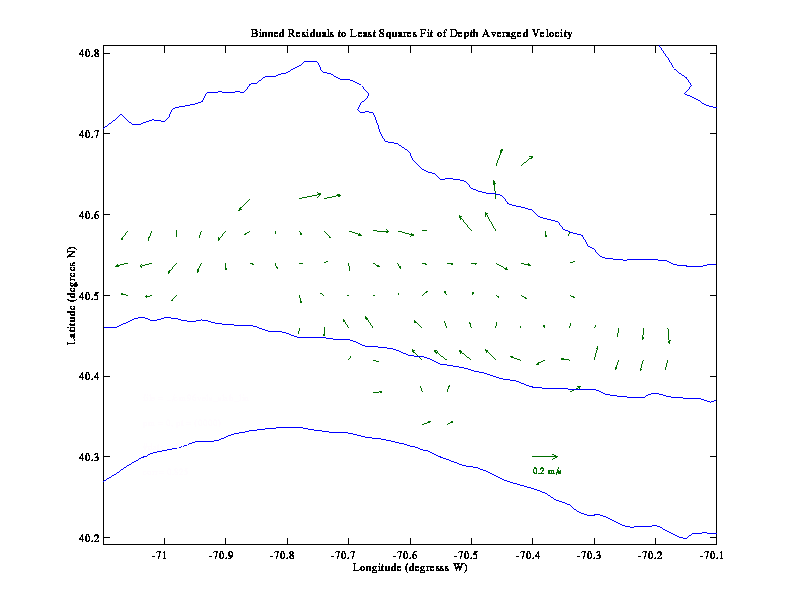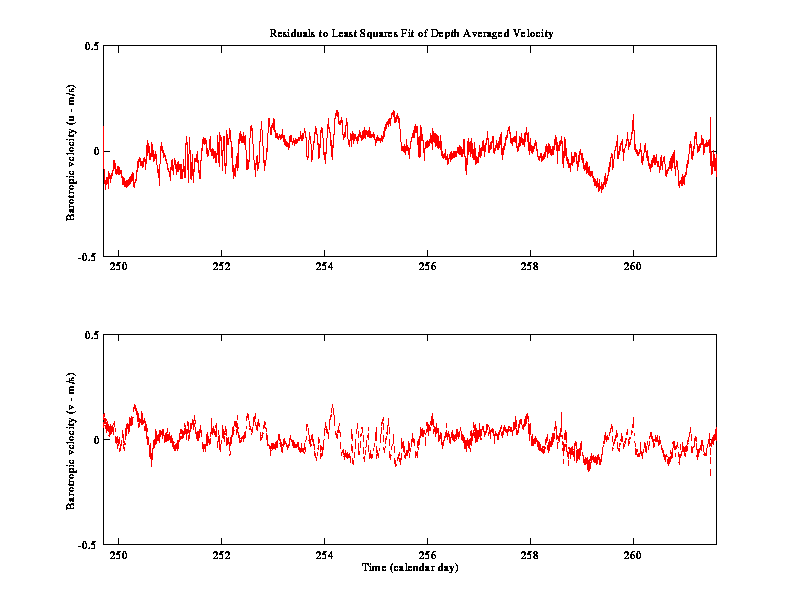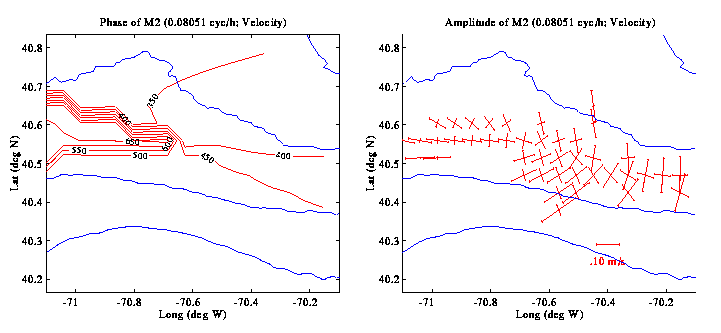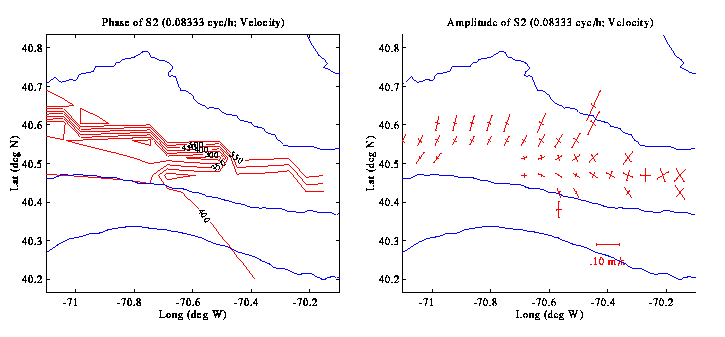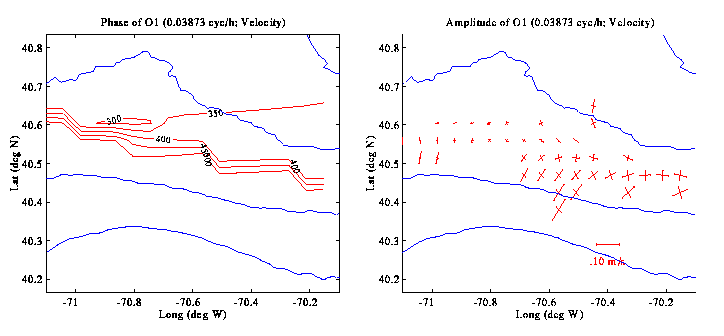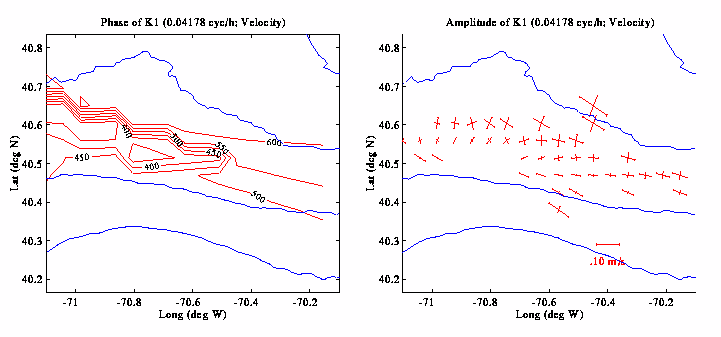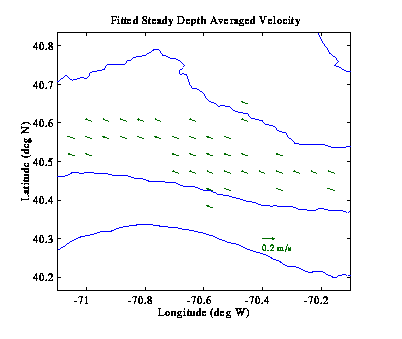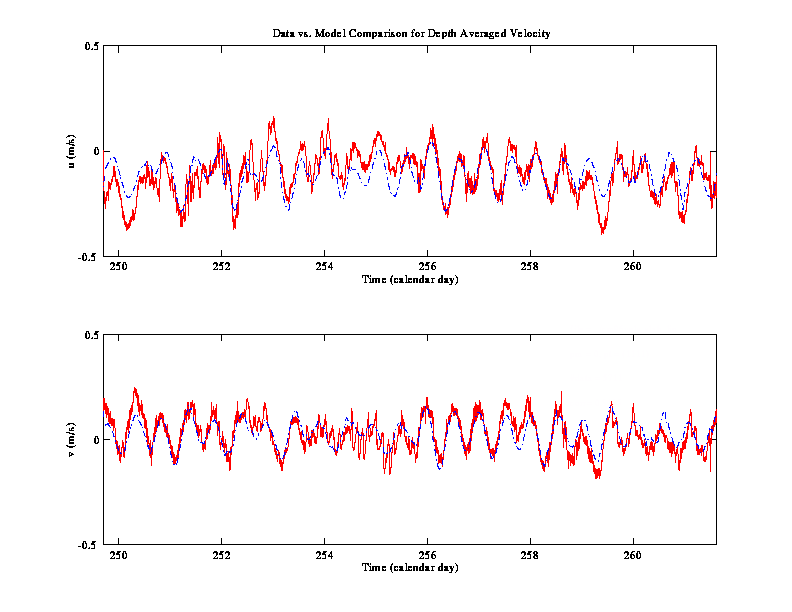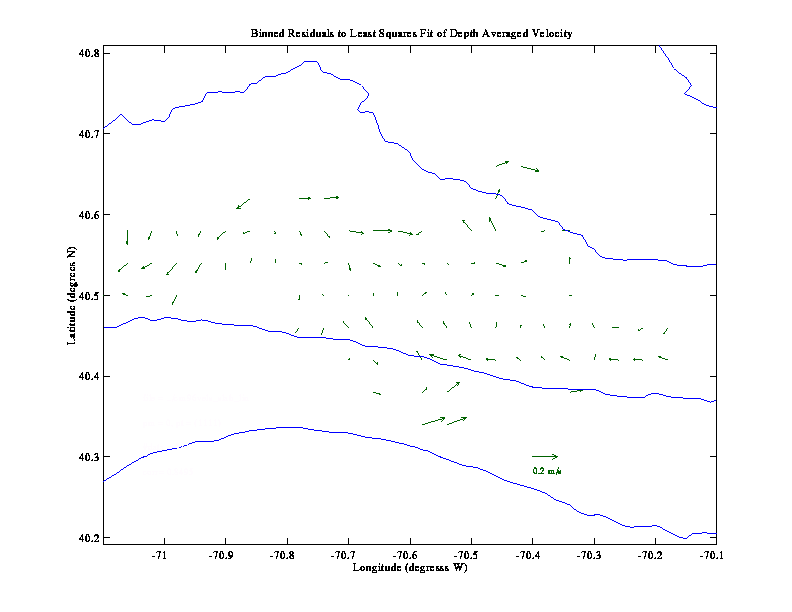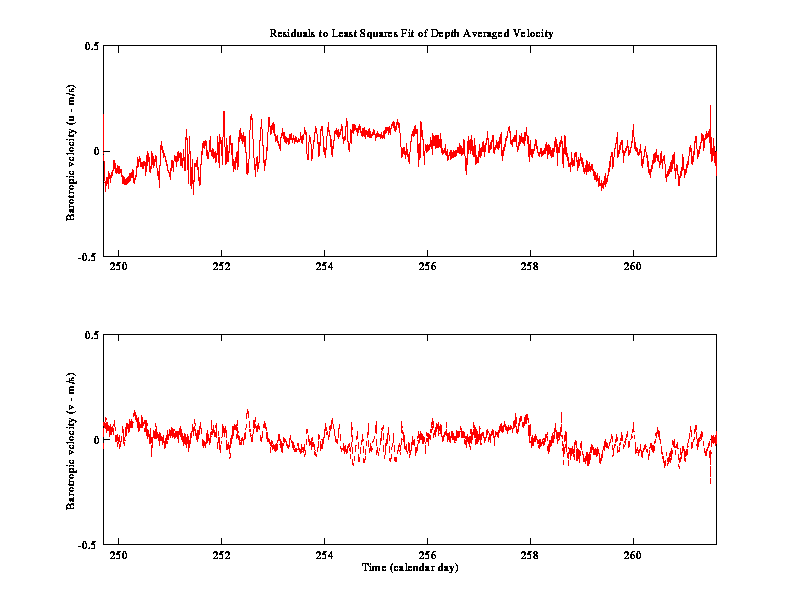A useful extension of harmonic tidal analysis, which permits the
amplitudes of the harmonic constituents to be functions of space, was
suggested by Candela et. al (1992). In brief, the raw time
series of barotropic velocity is expressed as a linear superposition
of a mean flow plus some combination of time periodic flows whos
frequencies are assumed known, say, the diurnal and semi-diurnal
tides. The unknown amplitudes of each of these constituents is
approximated using some particular horizontal structure functions
(commonly polynomials or Greens functions are used; e.g., Candela et
al., 1992; Harris et al., 1995; Forman and Freeland, 1991; Chen,
1992). Conventional least squares methods are then used to determine
a "best fit" solution for the set of amplitude coefficients.
Based on the simple barotropic velocity spectra computed above, it
appears that diurnal and semidiurnal frequencies contribute
significantly to the variance in the observations. Kinetic energy
spectra computed from moored current meters in the Nantucket Shoals
Flux Experiment (NSFE) (Beardsley et al., 1985) support this
conclusion both for summer and winter stratification conditions.
Visual inspection of the time series plotted above further reveals a
fortnightly signal in both the zonal and meridional components. Based
on these considerations, we include the following tidal constituents in our
harmonic analysis: M2, S2, O1, K1.
Tidal ellipses published by Moody et al. (1980) show that none
of these tidal constituents are significantly polarized in our region
of interest. Cotidal charts further show that the phase of the M2
tide varies by approximately 30 degrees / 100 km in the along-shelf
direction, while the S2 varies perhaps a little faster, at about 50
degrees / 100 km; the O1 and K1 both vary slowly at no more than 10
degrees / 100 km. For all of these constituents, phase changes in the
cross-shelf direction are either insignificant or unresolved.
Given the size of our ADCP survey region, we do not expect to resolve
spatial changes in phase, except possible for the M2 and S2 in the
along-shelf direction. For this reason, and for the sake of
simplicity, we use low-order polynomials as our spatial structure
functions for the harmonics as well as the mean flow. Below we
discuss results for 0th order polynomial fits (which is just Candela's method
degenerated back to traditional harmonic analysis) and 1st order
polynomial fits.
